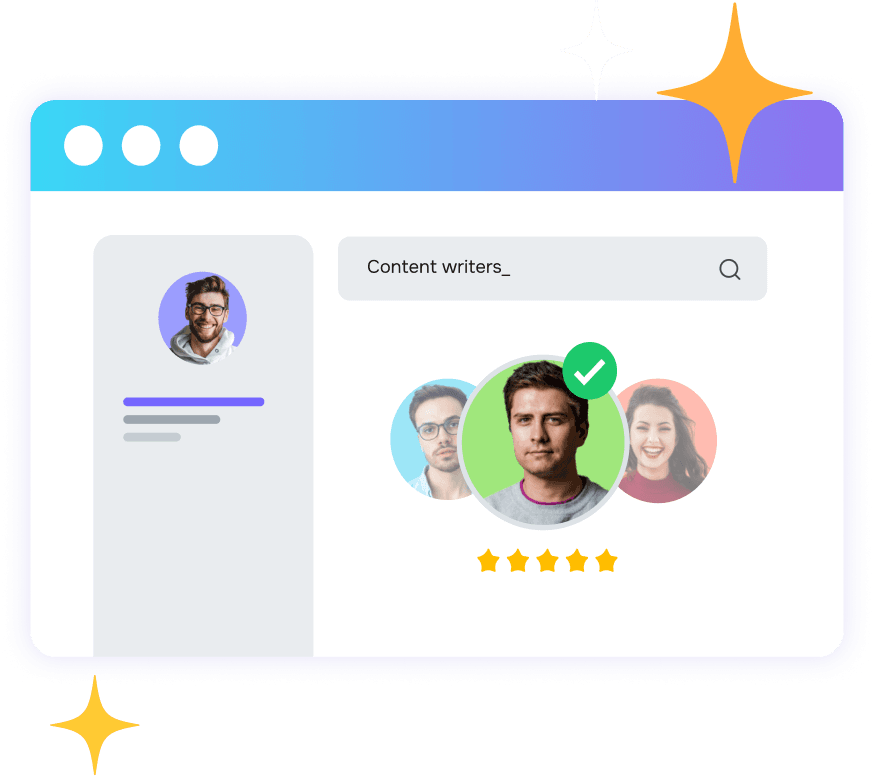Gaurav Barjatya
Head of Brand Marketing & Communications at TimesPro
Consumer-Centric Content: The Heartbeat of Modern Marketing Strategies
In the modern era, consumers demand more than just transactions; they seek connections, value, and experiences that align with their individual needs and aspirations. Enter the world of consumer-centric content—a strategic approach that not only speaks to consumers but also listens to them.
Join Kunal Bajpai, Senior Associate Program Management at Pepper Content, and Gaurav Barjatya, Head of Brand Marketing & Communications at TimesPro as they discuss all this and more.
This interesting conversation also helps shed light on navigating consumer psychology across domains, the role of content as the heartbeat of modern marketing, and the transformative influence of AI and technology. Also discover the crucial role of consumer-centric content, poised to shape brands, foster engagement, and lead the way in the dynamic digital landscape
Here are some excerpts.
1. Tell us about your journey so far.
Over nearly two decades, I've immersed myself in various facets of marketing, from consumer marketing to business marketing, adapting to different industries and roles. My journey has been marked by an unwavering fascination with understanding consumers, a perspective honed through extensive experience across diverse regions.
Flexibility has been a cornerstone of my approach, as I've moved fluidly across sectors like Telecom, FMCG, media, and sports entertainment. Rather than fixating on a single industry or role, I've embraced opportunities that I believed could contribute value to my journey. For instance, during the telecom boom around 2005-2006, I played a role in transforming Idea Cellular from a regional player to a national brand, a pivotal experience that taught me the intricacies of brand building and IPO campaigns.
In the realm of media, specifically managing marketing for Hindi entertainment channels at STAR for nearly eight years, I delved into the cultural codes that underpin consumer behavior. This insight allowed me to connect deeply with audiences by crafting stories that resonated with their emotions and cultural references. Later, my affinity for WWE led me to a role where I combined my professional expertise with personal passion, underscoring the significance of aligning one's work with genuine interests.
Recognizing the evolving landscape, I transitioned into the realm of consumer tech and edutech. This move was fueled by a belief in the transformative potential of education technology in reshaping how people learn and progress. Witnessing the realization of ideas that I had worked on earlier, such as using technology to bring education to remote areas, was a profoundly rewarding experience. My journey has been a mosaic of moments that have shaped my understanding of marketing and its profound impact on shaping brands, cultures, and lives.
2. How do you navigate the differing consumer psychology within different domains?
Navigating differing consumer psychology across various domains has never posed a significant challenge for me.
Instead of viewing consumers as abstract subjects, I approach them as individuals driven by emotions, aspirations, and fears.
Understanding how my brand can add value to their lives and evoke certain feelings is crucial. Categorizing consumers purely by demographics feels mechanical; I focus on connecting with them on a more human level.
As I transitioned from my extensive stint in sports and entertainment media to the edutech domain, I aimed for a fresh challenge. This decision was twofold: I considered the immediate benefits and long-term prospects. While my attachment to a beloved brand like WWE was undeniable, I evaluated the broader impact I could have in shaping the trajectory of a growth-oriented sector. Ultimately, the choice to delve into the edutech landscape aligned with my belief in contributing to the nation's progress and embracing a career path with lasting resonance.
3. What are your thoughts on the role of content in today's marketing landscape?
Content holds a central role in today's marketing landscape. Whether it's fiction, non-fiction, storytelling, documentaries, or even promoting a philosophy, content remains at the heart of it all. In a world where consumers are bombarded with information and choices, creating a narrative that resonates with them is key. It's not just about pushing products; it's about fitting your brand's story into the valuable content they seek. This connection between the brand and the consumer is vital.
I often draw parallels from popular culture, like movies, characters, cricket, and more, to explain this concept. Content serves as the bridge between the brand and the consumer, much like Thor's bridge that connects different worlds.
Without content, marketing becomes transactional and brands struggle to sustain meaningful relationships with consumers. Even when selling a product, we're selling a story, and that story is content.
Today, there's no distinction between digital, PR, TV, or other forms of content—it's all part of a unified landscape.
In a way, it's like the Avengers coming together; different elements merge to create a cohesive whole. This holistic approach recognizes that content is the linchpin, shaping how brands communicate, engage, and thrive in a cluttered digital age.
4. With the emergence of AI and technology, how do you foresee their impact on marketing strategies and creativity?
The impact of AI and technology on marketing strategies is undeniable and it's here to stay. The choice lies in whether we confront this head-on or sidestep it. Waiting for it to happen is not an option.
AI can simplify marketing by personalizing messaging and targeting for consumers. It has the potential to make marketers' lives easier, but we must remember that AI isn't replacing humans; it's enhancing our capabilities.
We need to layer human intelligence over artificial intelligence to ensure meaningful interactions.
Predictive analytics powered by AI has already transformed how we understand consumers and their preferences. It's astonishing how platforms can know us so well. However, this personalization comes with privacy risks. There's also the concern of feeding into our existing beliefs and ideologies, leading to a lack of diverse perspectives. AI's ability to curate content for individuals can lead to echo chambers, limiting our exposure to a broader range of ideas. Navigating this balance between convenience, privacy, and diverse perspectives is a significant challenge that we must address as AI continues to shape marketing and our lives.
5. What would your ideal content marketing platform look like?
In my ideal content marketing platform, I would strive for a comprehensive approach that covers every phase of the marketing funnel. Starting from the top, I'd utilize various tools for attracting potential customers, whether through ATL, BTL, or digital methods. This could involve leveraging SEO, SEM, and other intelligent tools to efficiently bring consumers to our platform.
Moving on to engagement, I'd employ chatbots and email strategies to interact with users effectively, ensuring that each touchpoint is optimized for a seamless experience. Analyzing user behavior would be a crucial aspect, identifying gaps and opportunities for improvement. By utilizing tools that provide insightful analysis, I could understand why certain users might not be converting and make informed adjustments.
Finally, when it comes to conversion, I'd harness platforms and expertise to design landing pages, user flows and calls to action that are tailored for maximum effectiveness. In essence, I'd make the most of the available tools across the entire spectrum of content marketing to create a holistic and impactful strategy.
6. In the face of evolving technologies, what advice would you offer to budding marketers entering this dynamic field?
To aspiring marketers entering this dynamic field, I would advise them to always keep their target audience in mind. It's easy to get caught up in the technical aspects and campaign strategies, but ultimately, it's the consumers who matter. Understand how your efforts will impact their lives, what value you're bringing, and how your message resonates with them. This perspective can guide your decisions and ensure your strategies remain consumer-centric.
Secondly, I'd emphasize that creativity should be purposeful. It's not about creating something flashy just for the sake of it. Instead, your creative ideas should be aligned with a well-thought-out marketing plan, which in turn should align with the overarching business objectives.
Creativity should enhance your marketing's effectiveness, drive meaningful engagement, and contribute to the overall success of the business.
In essence, it's the synergy between consumer understanding, creative innovation, and business strategy that leads to impactful marketing.

